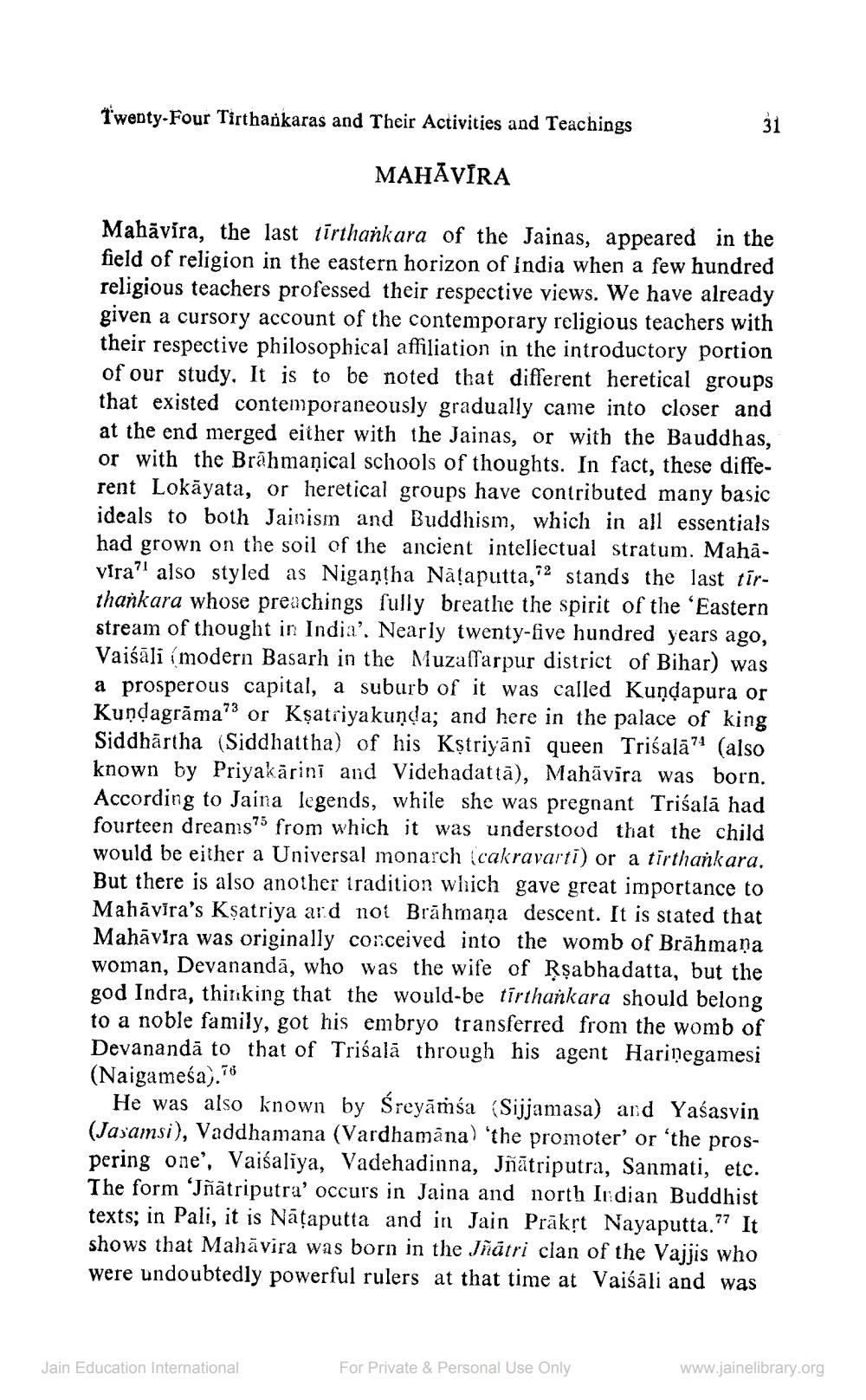________________
Twenty-Four Tirthařkaras and Their Activities and Teachings
MAHĀVIRA
Mahāvira, the last tirthankara of the Jainas, appeared in the field of religion in the eastern horizon of India when a few hundred religious teachers professed their respective views. We have already given a cursory account of the contemporary religious teachers with their respective philosophical affiliation in the introductory portion of our study. It is to be noted that different heretical groups that existed contemporaneously gradually came into closer and at the end merged either with the Jainas, or with the Bauddhas, or with the Brāhmaṇical schools of thoughts. In fact, these different Lokāyata, or heretical groups have contributed many basic ideals to both Jainism and Buddhism, which in all essentials had grown on the soil of the ancient intellectual stratum. Mahavira” also styled as Nigantha Națaputta, 12 stands the last tirthankara whose preachings fully breathe the spirit of the 'Eastern stream of thought in India'. Nearly twenty-five hundred years ago, Vaiśāli (modern Basarh in the Muzaffarpur district of Bihar) was a prosperous capital, a suburb of it was called Kundapura or Kundagrāma" or Kșatriyakunda; and here in the palace of king Siddhārtha (Siddhattha) of his Kștriyāni queen Trisalā?4 (also known by Priyakārini and Videhadattā), Mahāvīra was born. According to Jaina legends, while she was pregnant Trišalā had fourteen dreams from which it was understood that the child would be either a Universal monarch (cakravarti) or a tirthankara. But there is also another tradition which gave great importance to Mahavira's Ksatriya ard not Brāhmaṇa descent. It is stated that Mahāvira was originally conceived into the womb of Brāhmana woman, Devanandā, who was the wife of Rșabhadatta, but the god Indra, thinking that the would-be tirthankara should belong to a noble family, got his embryo transferred from the womb of Devanandā to that of Trišalā through his agent Harinegamesi (Naigameśa).78
He was also known by Śreyāmśa (Sijjamasa) ard Yaśasvin (Jasamsi), Vaddhamana (Vardhamāna) 'the promoter' or 'the prospering one', Vaišaliya, Vadehadinna, Jñātriputra, Sanmati, etc. The form ‘Jñātriputra' occurs in Jaina and north Indian Buddhist texts; in Pali, it is Nātaputta and in Jain Prākřt Nayaputta.?? It shows that Mahavira was born in the Jñātri clan of the Vajjis who were undoubtedly powerful rulers at that time at Vaiśāli and was
Jain Education International
For Private & Personal Use Only
www.jainelibrary.org




